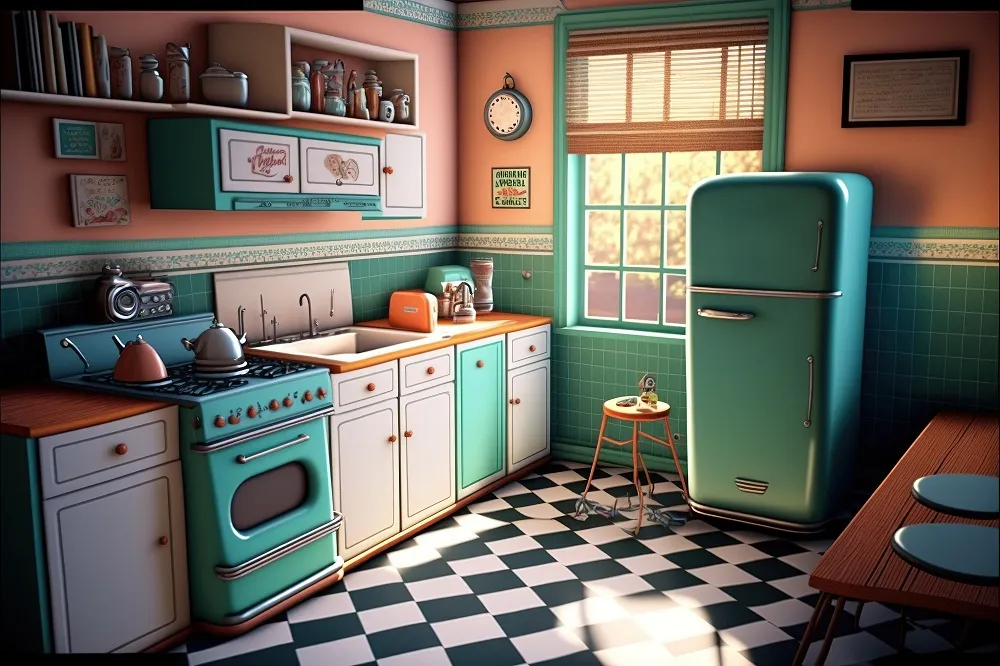Embracing the 1950s Kitchen Decor
Step back in time and infuse your culinary space with the charm and functionality of the 1950s. The 1950s kitchen decor era is characterized by its vibrant colors, innovative appliances, and a focus on creating a cheerful, inviting atmosphere. Reviving this aesthetic in your kitchen isn’t just about aesthetics; it’s about celebrating a time when the kitchen was the heart of the home. This guide will walk you through the essential elements of 1950s kitchen decor, helping you transform your space into a nostalgic haven. Get ready to explore the colors, appliances, and design choices that defined this iconic decade. Whether you’re undertaking a complete renovation or simply adding a few retro touches, the 1950s kitchen look offers a unique blend of style and functionality that continues to captivate today’s homeowners. Recreate the look and enjoy a kitchen that’s both stylish and a joy to spend time in.
Color Palette Revival
The color palette of the 1950s kitchen was a delightful departure from the more subdued tones of previous eras. Pastels reigned supreme, offering a sense of optimism and cheerfulness. These soft hues weren’t just limited to walls; they also adorned appliances, cabinetry, and accessories, creating a cohesive and inviting atmosphere. The use of these colors was a reflection of the post-war era’s newfound optimism and the desire for brighter, more positive living spaces. Experimenting with these colors in your kitchen is a fantastic way to capture the essence of the decade. Remember, the goal is to evoke a sense of joy and simplicity, qualities that are central to the 1950s kitchen aesthetic.
Pastel Perfection Hues
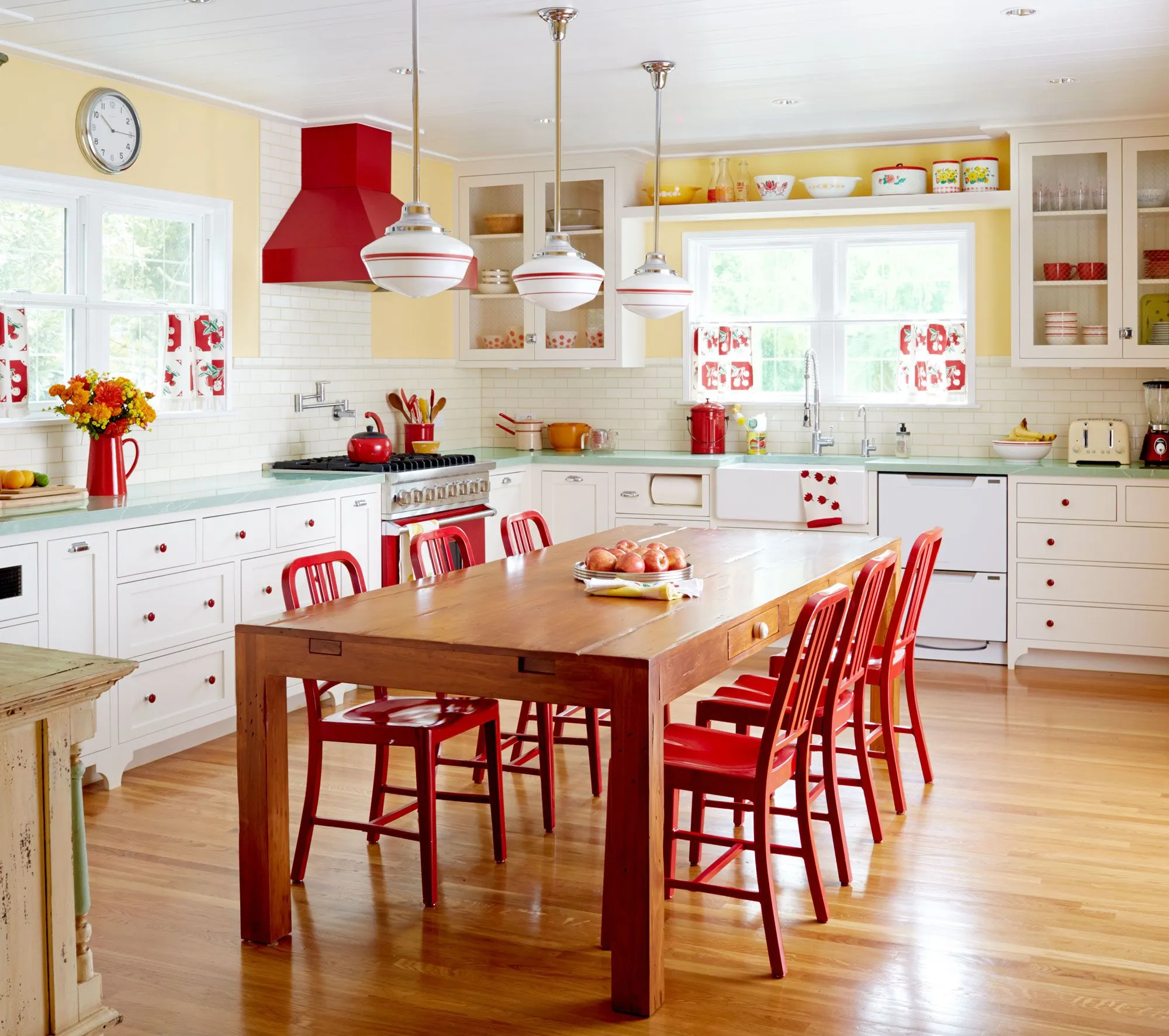
Pastel colors, such as baby blue, mint green, pale yellow, and bubblegum pink, were the stars of the 1950s kitchen. These gentle shades were often used in combination, creating a harmonious and visually appealing space. Pastel appliances became highly sought after, adding a touch of elegance and playfulness to the kitchen. These colors not only brightened up the space but also created a warm and welcoming environment. Incorporating pastels is a must when aiming for an authentic 1950s kitchen decor. Consider painting your cabinets in a soft pastel, choosing pastel-colored appliances, or using pastel accessories to tie the look together. The key is to use these colors in a way that feels balanced and inviting, ensuring that your kitchen becomes a delightful retreat.
Bold and Bright Colors
While pastels were prevalent, bolder colors also played a significant role in 1950s kitchen design. Red, turquoise, and black were often used as accents, adding a touch of vibrancy and contrast. These bolder colors were used on appliances, countertops, and decorative elements. This mix of pastels and bold accents gave kitchens a unique and dynamic appearance. Using bold colors judiciously can add depth and character to your kitchen. Paint an accent wall in a vibrant color, choose a red toaster, or opt for turquoise accessories to bring a pop of personality to the space. The interplay of these colors ensures the kitchen remains lively and visually appealing.
Essential Appliances of the Era
Appliances in the 1950s were not just functional; they were design statements. They were a symbol of modernity and convenience. From refrigerators to stoves, these appliances were designed to be both practical and aesthetically pleasing, making them a central part of the kitchen’s overall design. Today, these appliances are highly sought after by vintage enthusiasts. Investing in vintage or retro-style appliances is an excellent way to capture the 1950s kitchen decor. If original appliances are not an option, many modern manufacturers offer appliances with retro designs, allowing you to achieve the same look with the benefits of modern technology.
The Retro Refrigerator
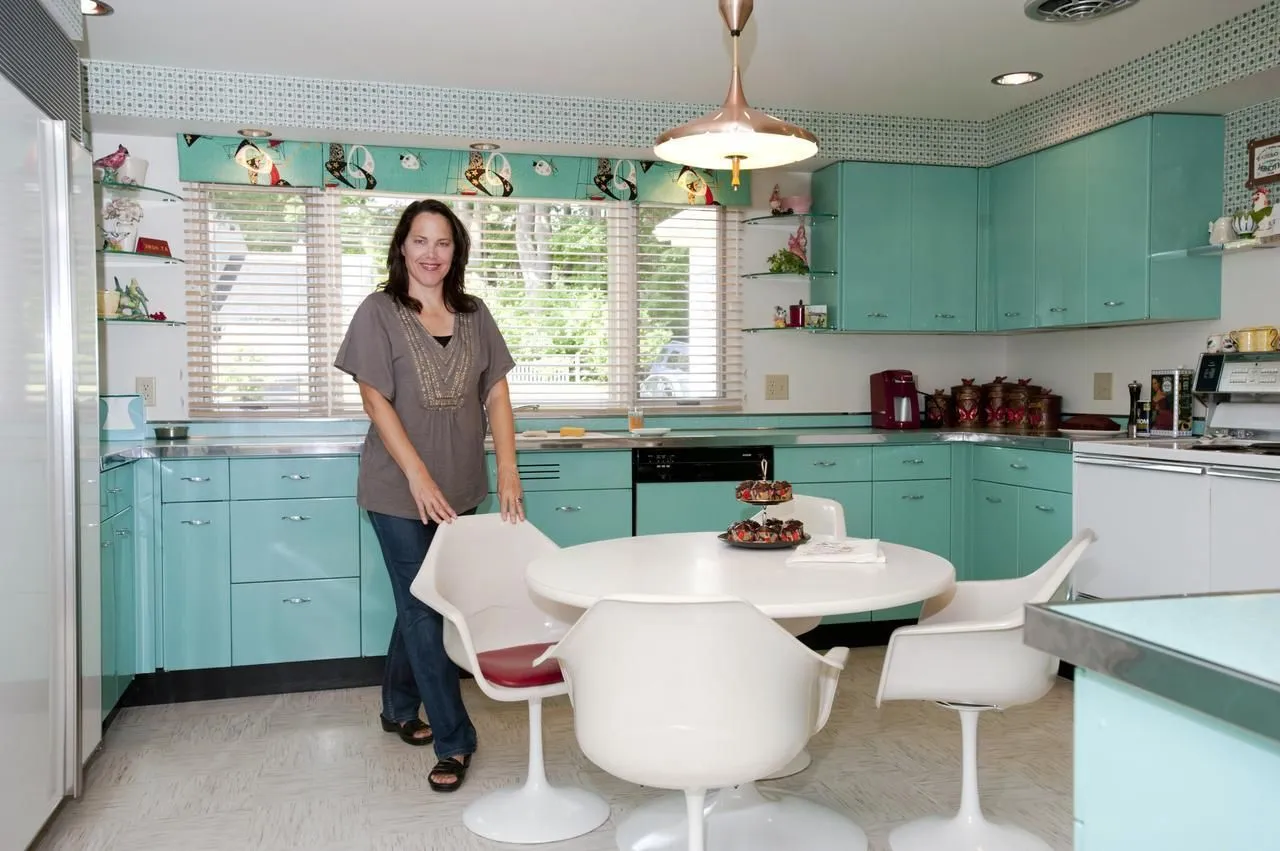
The refrigerator was the centerpiece of many 1950s kitchens. These refrigerators often featured rounded edges, chrome handles, and, of course, pastel colors. These refrigerators were not only efficient at preserving food but also added a touch of elegance to the kitchen space. The classic look of a retro refrigerator can instantly transport you back in time. Modern versions of these refrigerators offer the same vintage aesthetic with updated energy-efficient features. These appliances can be the focal point of your kitchen, injecting charm and nostalgia, making it a truly memorable space. Consider a pastel-colored refrigerator to truly capture the essence of the era.
Iconic Stovetops and Ovens
Stovetops and ovens from the 1950s were also designed with style in mind. They often featured chrome accents, streamlined designs, and vibrant colors. The design was a reflection of the era’s focus on creating both functional and visually appealing appliances. Vintage stoves and ovens are highly collectible and can significantly enhance the retro appeal of your kitchen. If you’re seeking to incorporate the 1950s kitchen look, look for retro-style stoves. They often come with modern features, providing the perfect blend of vintage charm and contemporary convenience. The right stovetop or oven will not only be a functional appliance but also a design statement.
Durable Countertops
Countertops in the 1950s were made from durable materials that were also aesthetically pleasing. Formica was a popular choice, available in various colors and patterns, allowing homeowners to create unique and stylish kitchen designs. Stainless steel was also used, particularly for accents and trim, adding a touch of modernity and practicality. The countertops played an important role in defining the overall style of the kitchen. Choosing the right countertop material can significantly impact the overall aesthetic of your kitchen. Both Formica and stainless steel are excellent choices for achieving an authentic 1950s kitchen decor, offering durability and visual appeal. Remember, the countertop should complement the other elements of your kitchen design.
Formica for the Win
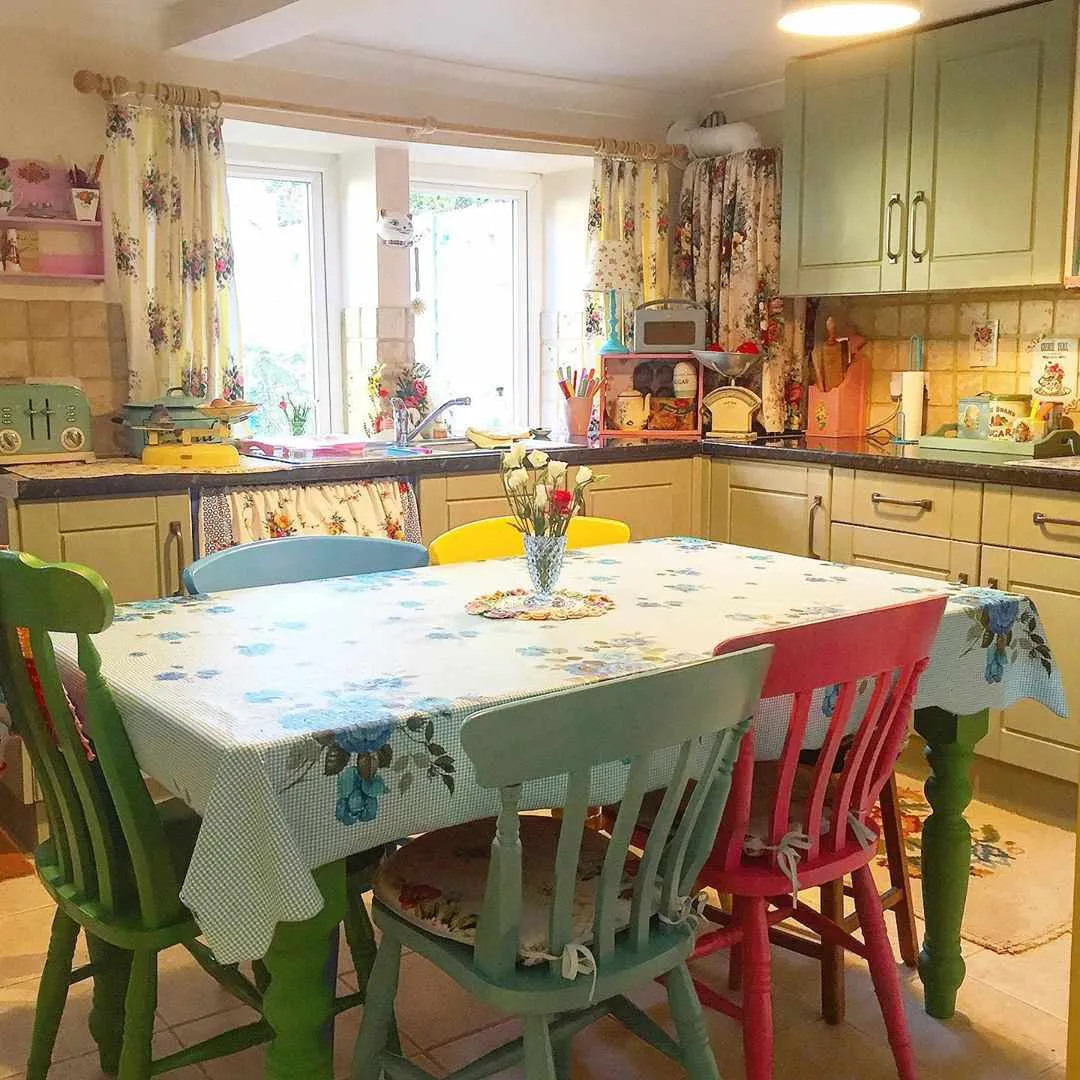
Formica countertops were a hallmark of 1950s kitchens. They were affordable, durable, and available in a wide range of colors and patterns, including the popular boomerang and atomic designs. Formica allowed homeowners to personalize their kitchens while maintaining a practical and easy-to-clean surface. Replicating this look is simple. Many companies still produce Formica in retro patterns. Formica countertops are a fantastic way to capture the essence of the 1950s kitchen. This option not only looks great but also offers practical benefits. Select a bold pattern or a solid pastel color to create a statement piece.
Tile and Stainless Steel Accents
Tile and stainless steel were often used to complement Formica countertops. Tile backsplashes added a touch of color and pattern, while stainless steel accents provided a sleek, modern contrast. These materials added to the overall aesthetic of the kitchen while also being functional and easy to maintain. Consider using tile and stainless steel to create a cohesive design. A colorful tile backsplash combined with stainless steel trim on appliances can perfectly capture the 1950s kitchen decor. These accents can enhance the aesthetic of your kitchen and provide practical benefits.
Cabinets and Storage Solutions
Kitchen cabinets and storage solutions in the 1950s were designed to maximize space and enhance the kitchen’s overall functionality. The cabinets provided ample storage, while clever storage solutions helped keep the kitchen organized and efficient. This era was the start of smart kitchen design. When redesigning your kitchen with a 1950s theme, focus on cabinetry that embodies the era’s clean lines and practical storage solutions. This focus will not only create a visually appealing space but also improve the kitchen’s functionality.
The Rise of the Kitchen Cabinet
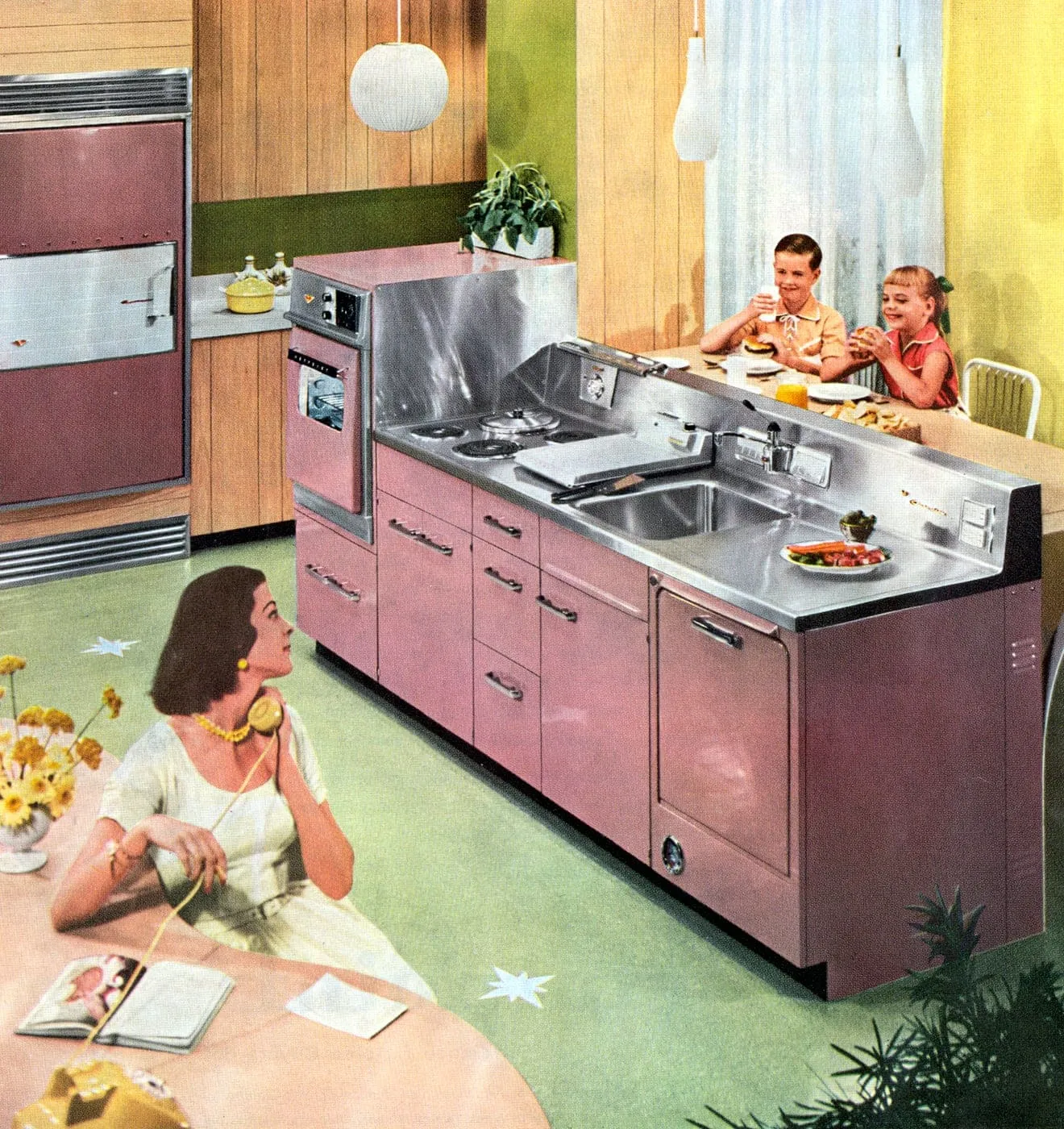
Kitchen cabinets in the 1950s were typically made of wood and featured clean lines and simple designs. They were often painted in pastel colors or classic white. Cabinets became a key element in the kitchen’s design. Opting for cabinets with a classic, streamlined design is an excellent way to capture the 1950s aesthetic. Consider painting them in a pastel color or a neutral shade to complement your other design elements. The style and color of your kitchen cabinets will greatly influence the overall feel of the space.
Maximizing Space with Clever Storage
Storage solutions were crucial in the 1950s kitchen, with built-in pantries, pull-out drawers, and innovative storage compartments designed to make the most of limited space. This emphasis on efficient storage reflected the era’s practical approach to kitchen design. Replicating these storage solutions can significantly improve your kitchen’s functionality. Install pull-out drawers, incorporate built-in pantries, and add storage compartments to maximize your available space. These solutions will not only streamline your kitchen but also enhance the overall 1950s aesthetic.
Vintage Decorating Accents
Accessories and decor played a significant role in defining the 1950s kitchen. From diner-style seating to retro-themed gadgets, these elements added personality and charm to the space. These accents were more than mere decoration; they were a reflection of the era’s culture and lifestyle. Selecting the right accessories can bring your 1950s kitchen decor to life. Choose items that reflect the era’s style and character to create a space that is both visually appealing and full of personality. Consider incorporating these elements to fully capture the charm of the 1950s.
Diner-Style Seating
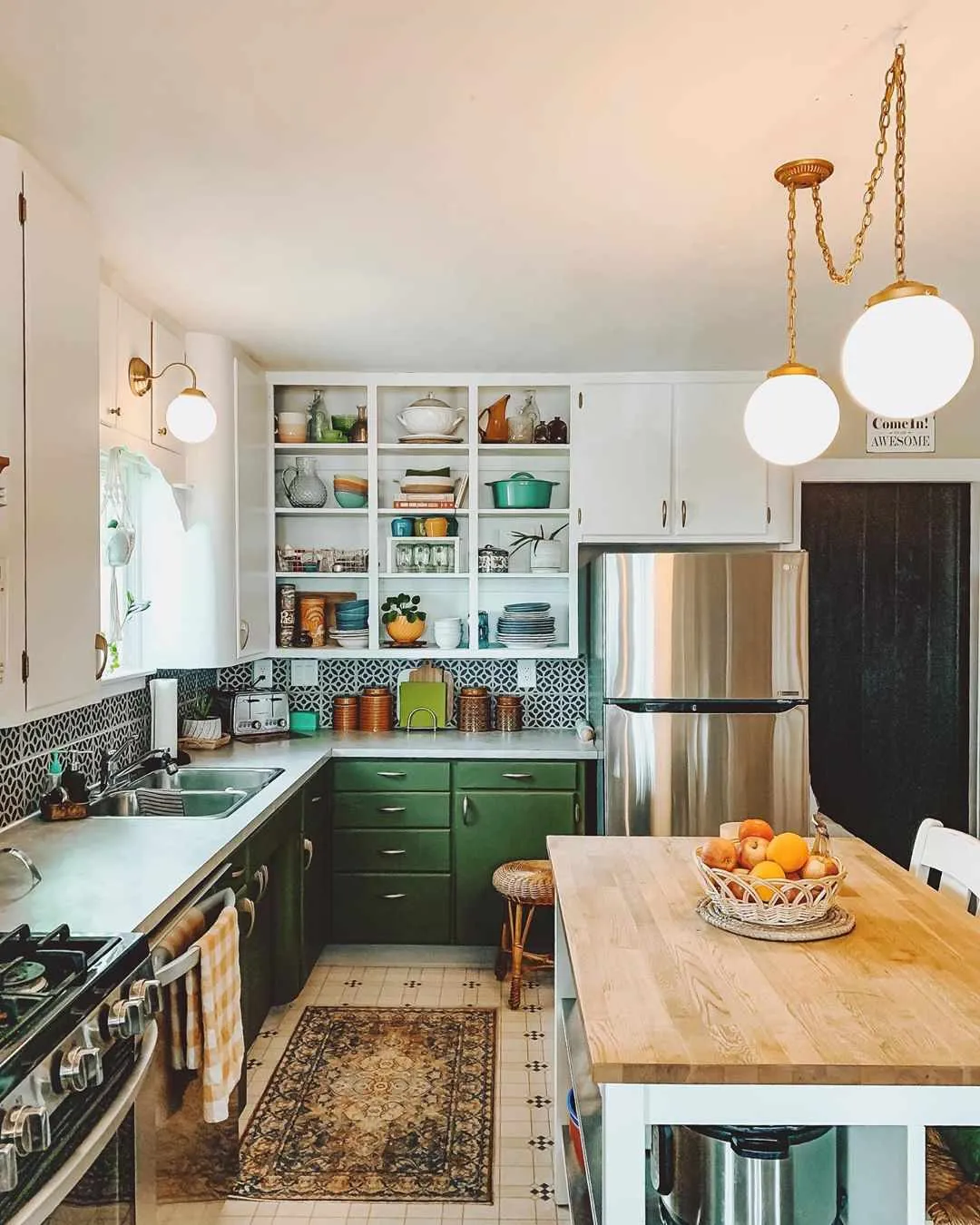
Diner-style seating, including chrome-legged chairs and a Formica-topped table, was a staple of 1950s kitchens. This setup provided a cozy and inviting space for meals and socializing. These seating areas were a symbol of the era’s casual dining culture. Adding diner-style seating is a great way to enhance the 1950s kitchen decor. Choose chairs with chrome legs and colorful vinyl upholstery. These will create a fun and functional dining space. This setup can make your kitchen the heart of your home.
Accessorizing with the Era’s Flair
Accessorizing with vintage items is essential to the 1950s kitchen decor. Consider adding retro clocks, colorful canisters, and patterned dish towels. These accessories add personality and character, bringing the kitchen to life. Choosing the right accessories can truly make your kitchen feel like a step back in time. Collect vintage kitchen gadgets, add a retro clock, and use colorful canisters and patterned dish towels to enhance the aesthetic. Small details can make a big impact.
Flooring Choices for Your Kitchen
Flooring in the 1950s kitchens was as important as any other design element, providing a foundation for the overall aesthetic. Linoleum and tile were popular choices, offering durability and a wide range of design possibilities. The flooring contributed to the overall charm and functionality of the kitchen. Selecting the appropriate flooring can tie your entire design together. Consider linoleum or tile to perfectly complement your 1950s kitchen decor. This selection will create a beautiful and functional space.
Linoleum for a Nostalgic Look
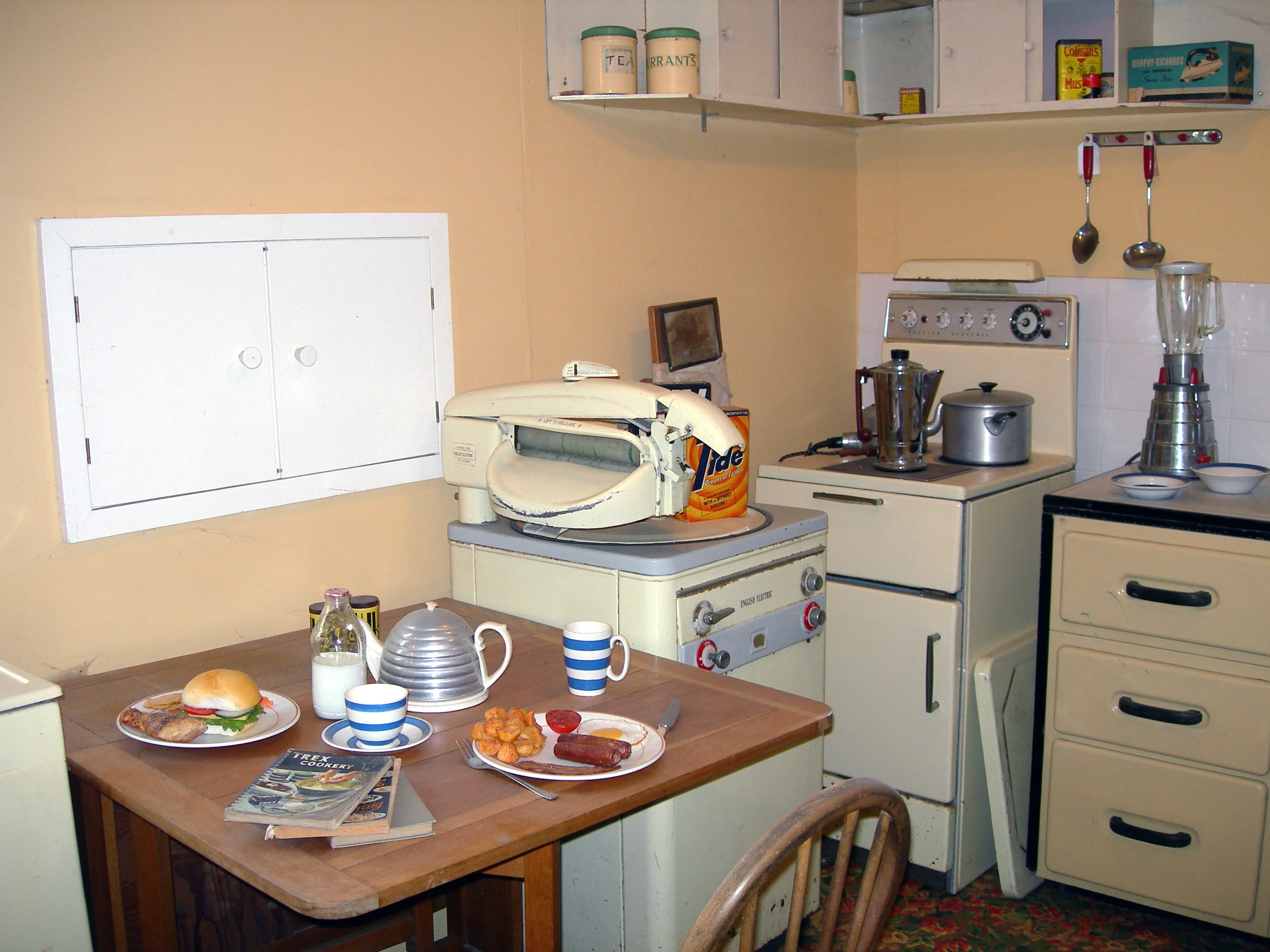
Linoleum flooring was a favorite for its affordability, durability, and vibrant patterns. Boomerang and terrazzo patterns were particularly popular, adding a playful touch to the kitchen. This flooring choice not only looked good but was also practical and easy to clean. Using linoleum flooring is an excellent way to capture the 1950s kitchen aesthetic. Choose patterns that reflect the era. This is a great option for recreating a classic kitchen style and adding a touch of nostalgia.
Tile Flooring Options
Tile flooring, particularly in bold colors or geometric patterns, was also a common choice. Tile provided a durable and stylish option, often used in conjunction with linoleum to create a cohesive design. The use of tile added elegance and visual interest to the kitchen. Opting for tile flooring can complement the 1950s kitchen decor and provide a durable and stylish base. Select tiles in bold colors or geometric patterns to enhance the overall aesthetic. The right tile selection will make your kitchen stand out.
Lighting to Set the Mood
Lighting played a vital role in defining the ambiance of a 1950s kitchen. Pendant lights, chandeliers, and under-cabinet lighting were all used to create a warm and inviting atmosphere. The lighting was not only functional but also a design element. Choosing the right lighting can significantly influence the overall atmosphere. Opt for pendant lights, chandeliers, and under-cabinet lighting to capture the essence of the 1950s kitchen decor. With the right lighting, you can make your kitchen feel inviting and stylish.
Pendant Lights and Chandeliers
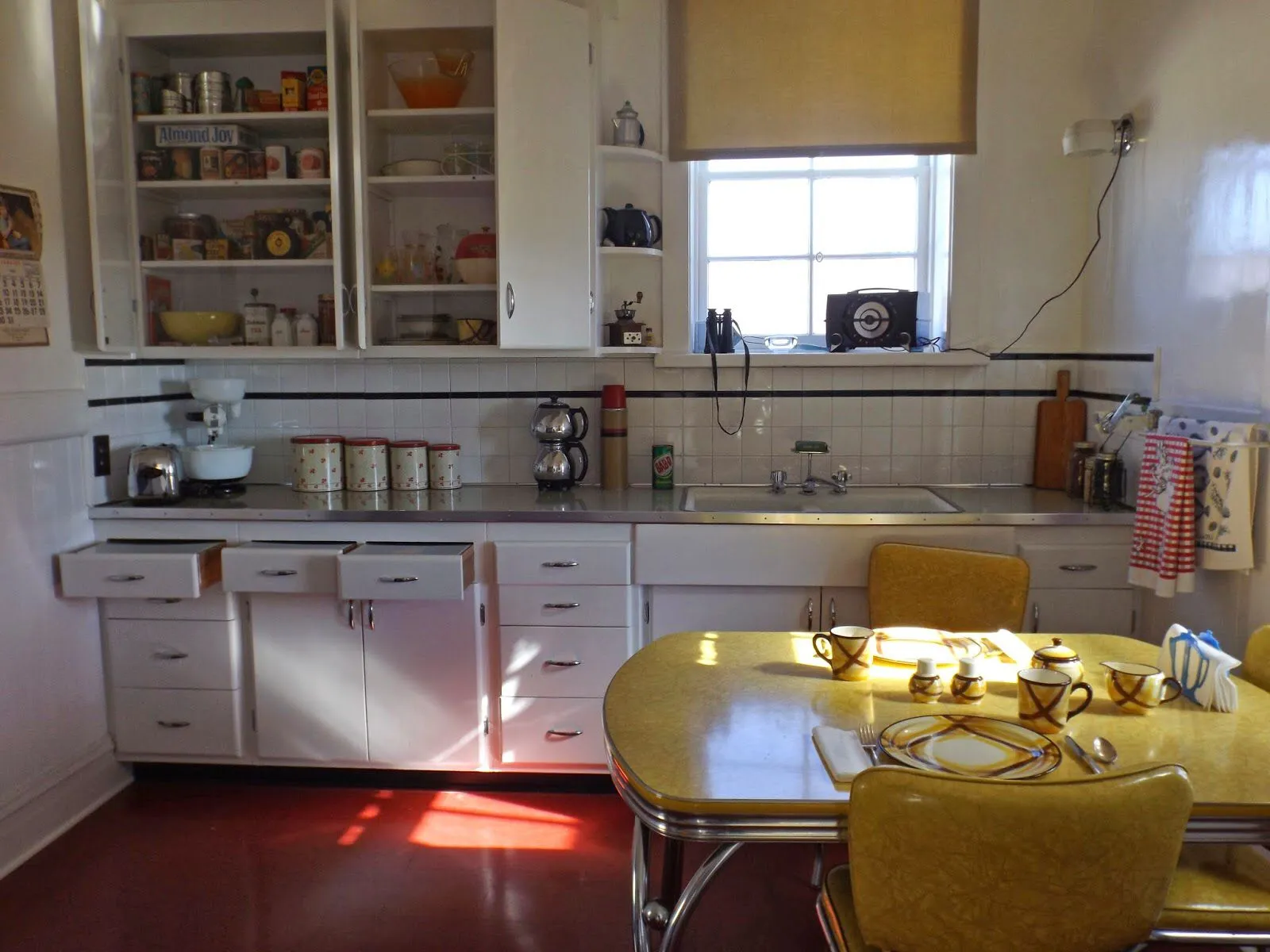
Pendant lights and chandeliers were often used over kitchen tables and islands, providing both task and ambient lighting. These fixtures often featured sleek, streamlined designs and chrome accents. The design choices were a reflection of the era’s focus on modernity and style. Installing pendant lights or a chandelier can be an excellent way to set the tone. Select fixtures with chrome accents and streamlined designs. The right lighting fixtures will enhance the kitchen’s retro appeal and provide functional lighting.
Under-Cabinet Lighting
Under-cabinet lighting was a practical and stylish feature, illuminating countertops and adding a warm glow to the kitchen. This lighting option combined functionality with a touch of elegance. Incorporating under-cabinet lighting can significantly enhance the functionality and aesthetic of your kitchen. This creates a more inviting atmosphere and highlights your countertops. Under-cabinet lighting is a subtle yet effective way to incorporate the 1950s kitchen decor.
Bringing It All Together
Bringing all these elements together will result in a stunning 1950s kitchen. From pastel colors to retro appliances and diner-style seating, the goal is to create a space that reflects the optimism and charm of the era. The result should be a kitchen that is both functional and a joy to spend time in. When designing your 1950s kitchen, focus on creating a cohesive design that reflects the era. Mix and match colors, appliances, and accessories, and add vintage pieces to enhance the overall aesthetic. The attention to detail will result in a stunning and nostalgic kitchen.
